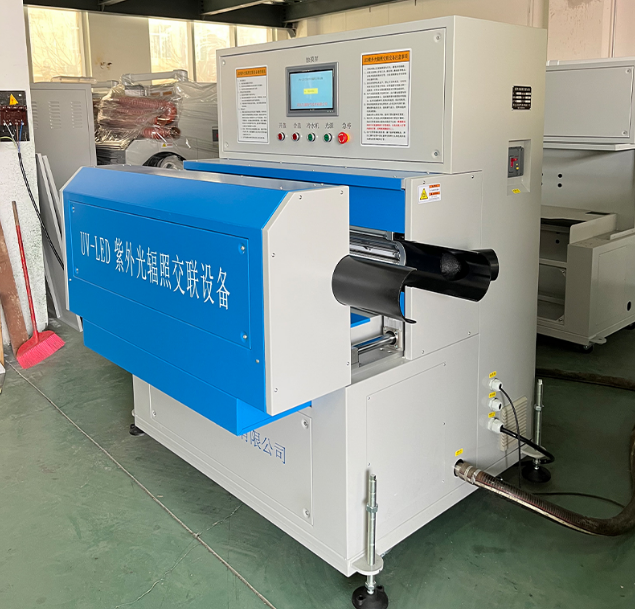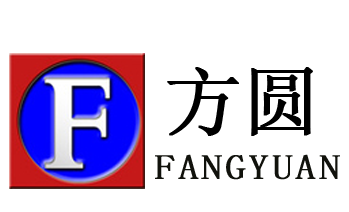UV-LED Ultraviolet Crosslinking Technology: Innovation and Prospects
The rise of advanced cable manufacturing technologies has led to the development of the UV-LED Ultraviolet Radiation Polyolefin Crosslinking Equipment, a next-generation solution that redefines energy efficiency, production speed, and material performance. Unlike conventional steam or mercury lamp-based systems, this equipment adopts cutting-edge UV-LED irradiation, offering up to 70% lower power consumption and more than double the crosslinking speed. Its compact design requires less installation space, integrates seamlessly into existing extrusion lines, and eliminates the inefficiencies of steam cross-linking, significantly improving production efficiency and reducing operational costs.
Working Principle of UV-LED Ultraviolet Radiation Crosslinking
The process of polyolefin crosslinking begins with extrusion molding, where the photo-crosslinked polyolefin compound is coated onto the conductive core. This semi-molten state is immediately exposed to high-intensity UV-LED Ultraviolet Radiation Polyolefin Crosslinking Equipment, triggering a rapid crosslinking reaction. After irradiation, the insulated wire undergoes cooling and subsequent processing, resulting in cross-linked polyethylene products with superior insulation and durability. Importantly, this technology requires only minor modifications to a standard extrusion line, such as the addition of a radiation box, traction system, and control cabinet, ensuring easy adaptation for manufacturers.
Technical Innovations with UV-LED Technology
The core strength of the UV-LED Ultraviolet Radiation Polyolefin Crosslinking machine lies in its advanced light source. Unlike traditional lamps, UV-LED devices provide high energy efficiency of around 30%, with precise wavelength selectivity (narrow bandwidth of just 5nm) and an exceptionally long lifespan exceeding 30,000 hours. These LEDs generate minimal infrared heat, produce no ozone, and are inherently safer for industrial environments.
A patented optical lens structure ensures even irradiation across the cable surface, while advanced thermal management combines Fluent simulation, LED junction temperature testing, and superior materials such as aluminum nitride ceramics and copper bases to maximize heat dissipation. Furthermore, its distributed network power supply uses vacuum potting technology for stability, enabling reliable dimming, on/off control, and consistent performance. The circular tunnel chamber design enhances irradiation uniformity, while adjustable output power (10–100%) provides flexibility across different production requirements.

Advantages Over Traditional Crosslinking Methods
Compared with conventional technologies like mercury lamp irradiation (UVI/UVII), electron accelerator crosslinking, and silane crosslinking, the UV-LED Ultraviolet Radiation Polyolefin Crosslinking Equipment offers multiple advantages. It eliminates harmful ozone emissions, reduces energy waste, and ensures cleaner, safer operations. The compact design requires significantly less floor space, making it ideal for facilities where optimization of plant layout is critical. Production efficiency is enhanced not only by faster crosslinking speeds but also by lower cooling demands due to reduced heat generation. Moreover, operational costs are minimized through reduced energy consumption and extended LED service life, providing manufacturers with long-term savings and higher return on investment.
Industrial Benefits and Applications
The adoption of UV-LED Ultraviolet Radiation Polyolefin Crosslinking machine is particularly transformative for wire and cable production industries. Products manufactured through this process exhibit excellent insulation performance, uniformity, and resistance to high temperatures. The equipment supports sustainable manufacturing practices by cutting down on emissions, conserving energy, and eliminating steam-based processes that traditionally consumed large amounts of resources.
Manufacturers also benefit from its adaptability. Since the system can be integrated with existing extrusion lines, it reduces the need for costly infrastructure changes. This ease of installation, combined with outstanding reliability, makes it a preferred choice for producers looking to upgrade production capacity while aligning with modern environmental standards.
Future Outlook for UV-LED Crosslinking Technology
As demand for high-performance cables increases across energy, telecommunications, and industrial sectors, technologies like the UV-LED Ultraviolet Radiation Polyolefin Crosslinking Equipment are expected to dominate the market. With ongoing improvements in LED efficiency, intelligent control systems, and sustainable production methods, UV-LED-based crosslinking is set to replace older methods on a larger scale. Its promise lies not only in operational efficiency but also in its ability to support industries in achieving global energy-saving and environmental targets.
UV-LED Ultraviolet Radiation Polyolefin Crosslinking Equipment FAQs
What is the key benefit of using UV-LED technology in crosslinking?
The main benefit is significantly higher energy efficiency—up to 70% savings—along with faster crosslinking speed, reduced environmental impact, and lower operational costs.
How does it differ from traditional mercury lamp crosslinking?
Unlike mercury lamps, UV-LED sources provide precise wavelength control, generate less heat, eliminate ozone emissions, and offer a lifespan of over 30,000 hours, greatly improving reliability and safety.
Can it be integrated into existing production lines?
Yes, the system requires only minimal modifications, such as installing a radiation chamber and control cabinet, making it easy to integrate with standard extrusion setups.
What types of products benefit from this technology?
The equipment is mainly used in wire and cable production, particularly for cross-linked polyethylene insulation that demands high durability, heat resistance, and superior electrical properties.
Is the UV-LED system environmentally friendly?
Yes. The system avoids steam processes, reduces power consumption, and eliminates harmful by-products like ozone, making it more sustainable than conventional methods.
-
Reliable Performance Testing with Advanced Aging Chamber Solutions
HaberlerAug.23,2025
-
Advancing Precision with Profile Projector Technology
HaberlerAug.23,2025
-
UV-LED Ultraviolet Crosslinking Technology: Innovation and Prospects
HaberlerAug.23,2025
-
Ensuring Safety and Compliance
HaberlerAug.23,2025
-
Electrical Properties Testing in Modern Applications
HaberlerAug.23,2025
-
Universal Tensile Testing Machine Applications in Modern Electrical and Material Testing
HaberlerAug.23,2025
 Copyright © 2025 Hebei Fangyuan Instrument & Equipment Co.,Ltd. All Rights Reserved. Sitemap | Privacy Policy
Copyright © 2025 Hebei Fangyuan Instrument & Equipment Co.,Ltd. All Rights Reserved. Sitemap | Privacy Policy

